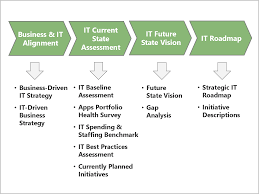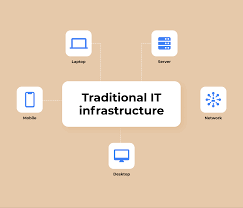Article: Technology Optimization
The Importance of Technology Optimization in Today’s Business Landscape
Technology plays a crucial role in the success of modern businesses. From streamlining operations to enhancing customer experiences, the right technology solutions can make a significant impact on an organization’s bottom line. However, simply adopting the latest technologies is not enough. To truly harness the power of technology, businesses must focus on optimization.
What is Technology Optimization?
Technology optimization involves fine-tuning and maximizing the efficiency and effectiveness of IT systems and infrastructure within an organization. It goes beyond just implementing new technologies; it’s about ensuring that these technologies are utilized to their full potential to drive business growth and innovation.
The Benefits of Technology Optimization
Optimizing technology offers numerous benefits to businesses, including:
- Improved Performance: By optimizing IT systems, businesses can enhance performance levels, reduce downtime, and increase productivity.
- Cost Savings: Efficiently managed technology resources lead to cost savings through reduced operational expenses and better resource utilization.
- Enhanced Security: Optimized technology systems are more secure, helping to protect sensitive data and mitigate cybersecurity risks.
- Better Decision-Making: Access to accurate data and analytics from optimized systems enables informed decision-making at all levels of the organization.
- Competitive Advantage: Businesses that optimize their technology gain a competitive edge by being agile, innovative, and responsive to market changes.
Strategies for Technology Optimization
To successfully optimize technology within an organization, consider implementing the following strategies:
- Regular Assessments: Conduct regular assessments of existing technology infrastructure to identify areas for improvement.
- Training and Development: Invest in training programs to ensure that employees have the necessary skills to leverage technology effectively.
- Data Management: Implement robust data management practices to ensure data accuracy, accessibility, and security.
- Automation: Embrace automation tools to streamline repetitive tasks and improve operational efficiency.
- Collaboration: Foster collaboration between IT teams and other departments to align technology initiatives with business goals.
In Conclusion
In today’s rapidly evolving business landscape, technology optimization is not just a choice but a necessity. By focusing on maximizing the potential of IT systems and infrastructure through strategic planning, continuous improvement, and innovation, businesses can stay ahead of the curve and achieve long-term success in an increasingly digital world.
7 Key Benefits of Technology Optimization for Modern Businesses
- Improved performance and efficiency of IT systems
- Cost savings through better resource utilization
- Enhanced cybersecurity measures and data protection
- Access to accurate data for informed decision-making
- Competitive advantage by being agile and innovative
- Increased productivity and reduced downtime
- Better alignment of technology initiatives with business goals
Challenges of Technology Optimization: Initial Costs, Disruption, and Resistance to Change
- Initial Costs
- Disruption
- Resistance to Change
Improved performance and efficiency of IT systems is a key benefit of technology optimization. By fine-tuning and maximizing the capabilities of IT infrastructure, businesses can experience enhanced operational productivity, reduced downtime, and smoother workflow processes. This optimization allows organizations to leverage their technology resources more effectively, leading to increased overall performance levels and better utilization of IT investments. In a competitive business environment where speed and reliability are paramount, optimizing IT systems plays a crucial role in driving success and achieving strategic objectives.
Cost savings through better resource utilization
Cost savings through better resource utilization is a significant advantage of technology optimization for businesses. By efficiently managing technology resources and ensuring their optimal usage, organizations can reduce operational expenses and maximize the value derived from their investments. Through strategic planning and implementation of technologies that streamline processes and enhance productivity, businesses can achieve cost savings while maintaining or even improving the quality of their products or services. This proactive approach not only contributes to financial savings but also positions the company for long-term sustainability and growth in a competitive market environment.
Enhanced cybersecurity measures and data protection
Enhanced cybersecurity measures and data protection are key benefits of technology optimization. By fine-tuning IT systems and infrastructure, businesses can strengthen their defense mechanisms against cyber threats, safeguard sensitive information, and mitigate the risk of data breaches. Implementing robust security protocols, regular system updates, encryption techniques, and access controls are essential components of technology optimization that contribute to a more secure digital environment. Prioritizing cybersecurity through optimization not only protects valuable data assets but also fosters trust with customers and partners, ultimately ensuring business continuity and reputation management in an increasingly interconnected world.
Access to accurate data for informed decision-making is a key benefit of technology optimization. By ensuring that IT systems are fine-tuned to collect, process, and analyze data effectively, organizations can make decisions based on real-time insights and trends. This allows businesses to respond swiftly to market changes, identify opportunities for growth, and mitigate risks proactively. With accurate data at their fingertips, decision-makers can have the confidence to steer their organizations in the right direction, driving success and staying ahead of the competition.
Competitive advantage by being agile and innovative
Technology optimization provides businesses with a significant competitive advantage by enabling them to be agile and innovative in today’s fast-paced market environment. By fine-tuning their IT systems and infrastructure, organizations can adapt quickly to changing market conditions, customer demands, and industry trends. This agility allows businesses to seize new opportunities, respond promptly to challenges, and stay ahead of competitors. Furthermore, optimized technology empowers companies to drive innovation, develop cutting-edge solutions, and deliver enhanced products and services that meet the evolving needs of their customers. Ultimately, by leveraging technology optimization to foster agility and innovation, businesses can position themselves as industry leaders and achieve sustainable growth in the digital age.
Increased productivity and reduced downtime
One significant benefit of technology optimization is the increase in productivity and reduction in downtime within an organization. By fine-tuning IT systems and infrastructure, businesses can streamline processes, automate repetitive tasks, and improve overall efficiency. This leads to employees being able to work more effectively and make better use of their time, ultimately boosting productivity levels. Additionally, optimized technology systems are less prone to failures and downtime, ensuring that operations run smoothly without interruptions, allowing employees to focus on their tasks without disruptions.
Better alignment of technology initiatives with business goals
One significant benefit of technology optimization is the improved alignment of technology initiatives with business goals. By fine-tuning IT systems and infrastructure to better support and complement the overarching objectives of the organization, businesses can ensure that their technological investments directly contribute to driving growth, efficiency, and innovation. This alignment fosters a more strategic approach to technology implementation, enabling companies to maximize the impact of their IT resources on achieving key business objectives and staying competitive in today’s dynamic market landscape.
Initial Costs
One significant con of technology optimization is the initial costs associated with implementing strategies to enhance IT systems. Businesses may face a substantial upfront investment in acquiring new hardware, software, or training programs to optimize their technology infrastructure. This financial burden can pose a challenge for organizations, especially smaller ones with limited budgets, as they weigh the potential long-term benefits of technology optimization against the immediate costs involved. Balancing the need for modernization with budget constraints is a crucial consideration when embarking on technology optimization initiatives.
Disruption
During the implementation of technology optimization initiatives, organizations may encounter disruptions in their regular operations and workflows. The transition to new systems or processes can lead to temporary challenges such as downtime, learning curves for employees, and potential errors during the adjustment period. These disruptions can impact productivity and efficiency in the short term, requiring careful planning and communication to minimize any negative effects on business continuity.
Resistance to Change
Resistance to change is a significant con of technology optimization that organizations often face. Employees may be hesitant to adopt new technologies or modify established processes, fearing disruptions or uncertainties in their roles. This resistance can impede the smooth implementation of technology optimization initiatives and hinder the overall success of such efforts. Overcoming this challenge requires effective communication, training, and change management strategies to help employees understand the benefits of embracing change and to facilitate a smooth transition towards optimized technology solutions.











